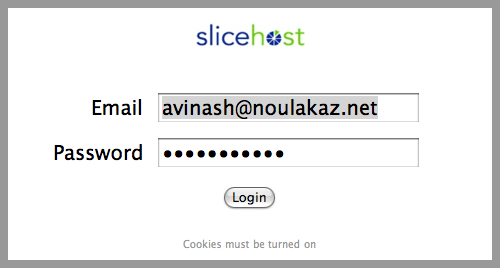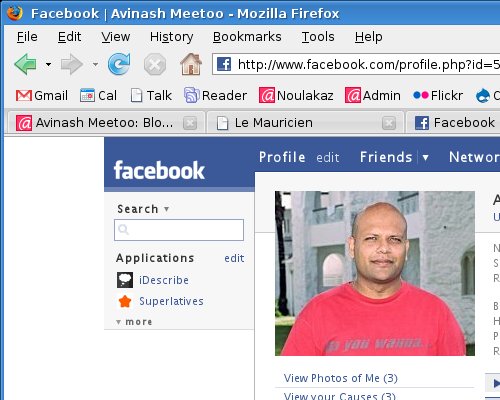
Did you notice that my weblog is not hosted at Icdsoft anymore? I have moved to a shiny virtual private server courtesy of Slicehost which uses virtualization to run multiple operating systems (hence multiple VPS) on the same server.
I first heard of Slicehost about two months ago when looking for a hosting company supporting Ruby on Rails (which unfortunately Icdsoft isn’t). Their VPS plan includes (I quote):
- Full root access and rebooting – I am a fan of SSH (and SCP) and I loved the idea of getting access (as root) to the command line and do everything I want on a box found in the US…
- Choice of Linux distro – Either Ubuntu (Dapper Drake or Gutsy Gibbon), Debian, Fedora, Centos or Gentoo. I thought a lot about this and settled for Gutsy Gibbon. Sure it’s new but most people using Slicehost use Ubuntu and many have upgraded and had had not problem whatsoever. Moreover, I use Gutsy Gibbon at home…
- Dedicated IP address and Tier-1 redundant bandwidth – My own IP address! Too great. This opens the door to all kinds of tricks like having multiple domains pointing to the same box. I’m sure I’ll get some additional domains very shortly. As for the bandwidth, it’s great to be able to do a “aptitude install apache2” and have apache running under 5 seconds. Those in the US are spoilt kids :-)
- RAID1 disk storage – No need to do backup (even though it can be done) as RAID1 uses mirroring and, in case of a faulty hard disk, the people at Slicehost naturally replace it. Some people backup the Slicehost data on Amazon S3 just to be sure. I’ll investigate.
- Reserved RAM slice – I have chosen the simplest (and cheapest) plan which gives me 256Mb of RAM. Now, before you run away shouting “What can we do with 256Mb in 2007!!!”, notice that we are speaking of a server without X-Window here. Aha! Now you understand.
- Guaranteed CPU slice and more when available – I have a dedicated CPU slice (in the scheduler sense) and I am currently using only 4% of it for my weblog. This means that I can have lots and lots of new applications (written using Ruby on Rails or Java, whatever) and I won’t even use all my CPU slice. For your information, my weblog now runs on a server with 4 AMD Opteron 2212 HE Dual-Core processors i.e. 8 cores! Now, you understand why I have been teaching Concurrency and Parallelism for the past three years…
- Bootable rescue mode – in case I screw up.
- Unlimited environments: Ruby on Rails, Python, Java and more – and this is the reason I have moved to Slicehost. I love programming. And I love programming languages. Unfortunately, most hosting companies are very PHP-centric. I really want to experiment with frameworks like Ruby on Rails, Django, Spring, Seaside, Lift, etc. Now I have no excuse.
Two (small) glitches
First of all, they don’t accept customers if they feel they don’t have the hardware resources. In that case, you are put on a waiting list and they order new hardware. That why I had to wait two months to move to Slicehost. Now, this “glitch” is also a benefit in the sense that you know that everything will be great once you are accepted.
The second glitch is the price. The smallest hosting plan called 256slice (with 256MB of RAM, 10GB of HD space and 100GB of monthly transfer) is $20 per month. Now, this is mostly negligible for an American or a company but not for me.
I’ve managed to convince Christina that this is worthwhile for two reasons:
- Self-education. A new server to manage. New frameworks to learn. This is going to be tough but good… and perhaps valuable for the future. Who knows?
- New opportunities. It is perfectly possible that Christina and I develop a new Ruby on Rails application we have been talking a lot on lately. We will use Adsense, at least to cover our expenses. I know this feels like vaporware but stay tuned…


